Contributed by Cathy Faye.
I listen to the radio every week. In fact, I listen to it a lot. Mostly National Public Radio. On my weekly commute, I catch up with the world on Morning Edition. In the evenings while I get ready for the next day, I’ll take whatever program is on, but I’m particularly pleased if it is a Wednesday night, because…Radiolab! On my weekend commute, it’s always Living on Earth and Car Talk. It’s part of my routine. I love the radio.
As it turns out, most Americans seem to love the radio. Despite the rise of new forms of audio entertainment (think podcasts and Pandora), more than 260 million Americans still tune in to AM/FM radio every week. Why do we love the radio so much? How do radio messages affect us?
Psychologists have been asking these kinds of questions since radios began to make their way into our homes in the 1930s. In The Psychology of Radio (1935), Harvard psychologists Hadley Cantril and Gordon Allport set to work exploring the psychological experience of radio listening: what persuades us on the radio? How does a radio host’s voice or sex affect us? How long should a radio show be?
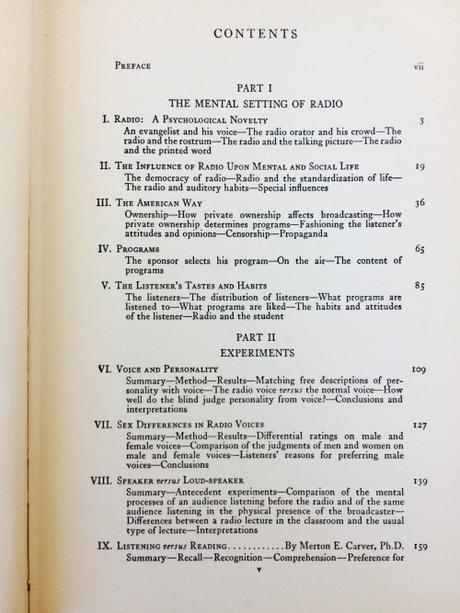
Psychology of Radio (1935), by Hadley Cantril and Gordon Allport. Table of contents.
Radio, they argued, was a brand new psychological experience. It was different from “talking pictures,” where images were present, and it was a completely one-way social experience. There’s no need to conform to the feelings and actions of other audience members when you are at home listening to the radio. Incidentally, the authors note that broadcasters recognized this, and therefore began including “forced laughter” from a studio audience in an effort to encourage at-home-audience enthusiasm!
The Psychology of Radio shows that psychologists were interested in the effects of everyday listening in 1935. At this time, however, psychologists were not just studying radio; they were also becoming frequent guests on the radio. In the years leading up to World War II, psychological experts could be heard on the radio discussing all kinds of topics relevant to wartime, including fear and propaganda.
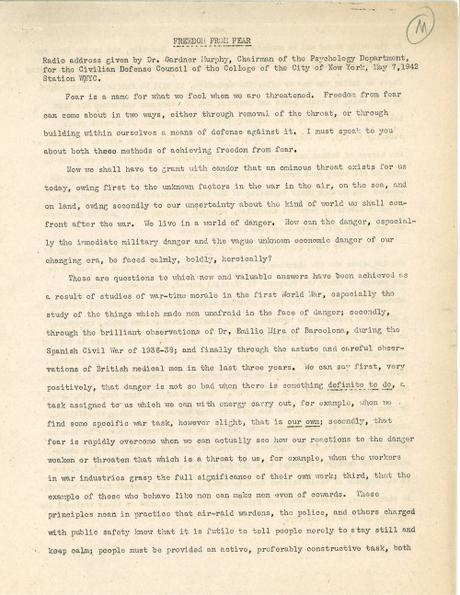
Social psychologist Gardner Murphy discusses fear on a WNYC radio program. From the Gardner and Lois B. Murphy papers.
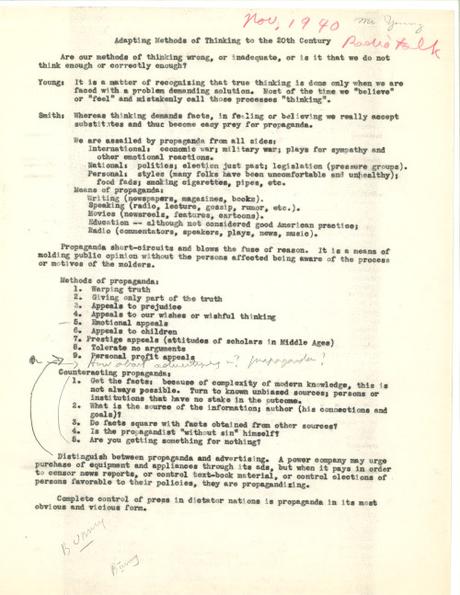
Radio talk on propaganda given by Paul T. Young in 1940. From the Paul T. Young papers.
Psychologists also used the radio to give out advice on everything from understanding nervous children to curing a stutter.
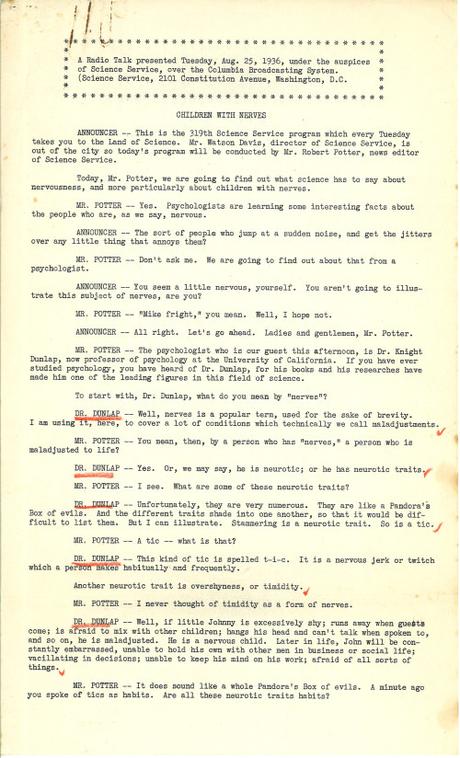
Knight Dunlap explains nervous children in 1940. From the Knight Dunlap papers.
Psychologists even became experts on radio itself, lending their expertise to studies of children’s programming. Child psychologist Martin Reymert edited scripts for the popular children’s radio program Jack Armstrong, the All American Boy. He developed standards for making the program educational and entertaining.
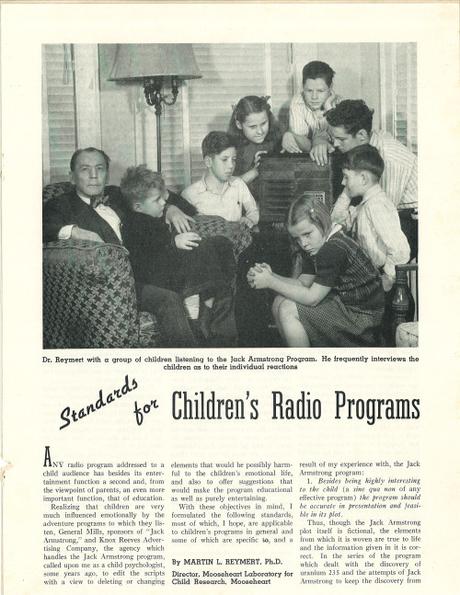
An article by Reymert describing his work on Jack Armstrong. From the Martin Reymert papers.
Indeed, in the 1930s and 1940s, psychologists were taking full advantage of radio, studying it and using it as an outlet for their work.
As I think about these early studies and uses of radio, I come back to a question posed by Cantril and Allport in Psychology of Radio: why do we like the radio so much? They suggest that it is because we enjoy being part of a limited audience, where we can react in any way we choose:
The listener may respond in any way he pleases with no more constraint than that imposed upon him by the few people who may listening with him. He feels no compulsion to laugh at stale jokes, to applaud a bad actor, or to cheer…If he chooses, he can sing, dance, curse, or otherwise express emotions relevant or irrelevant (pp. 10-11)
I am inclined to agree. And I will remember this the next time I carelessly shake my head in complete disagreement during Morning Edition or laugh shamelessly and loudly at the really bad jokes on Car Talk.
